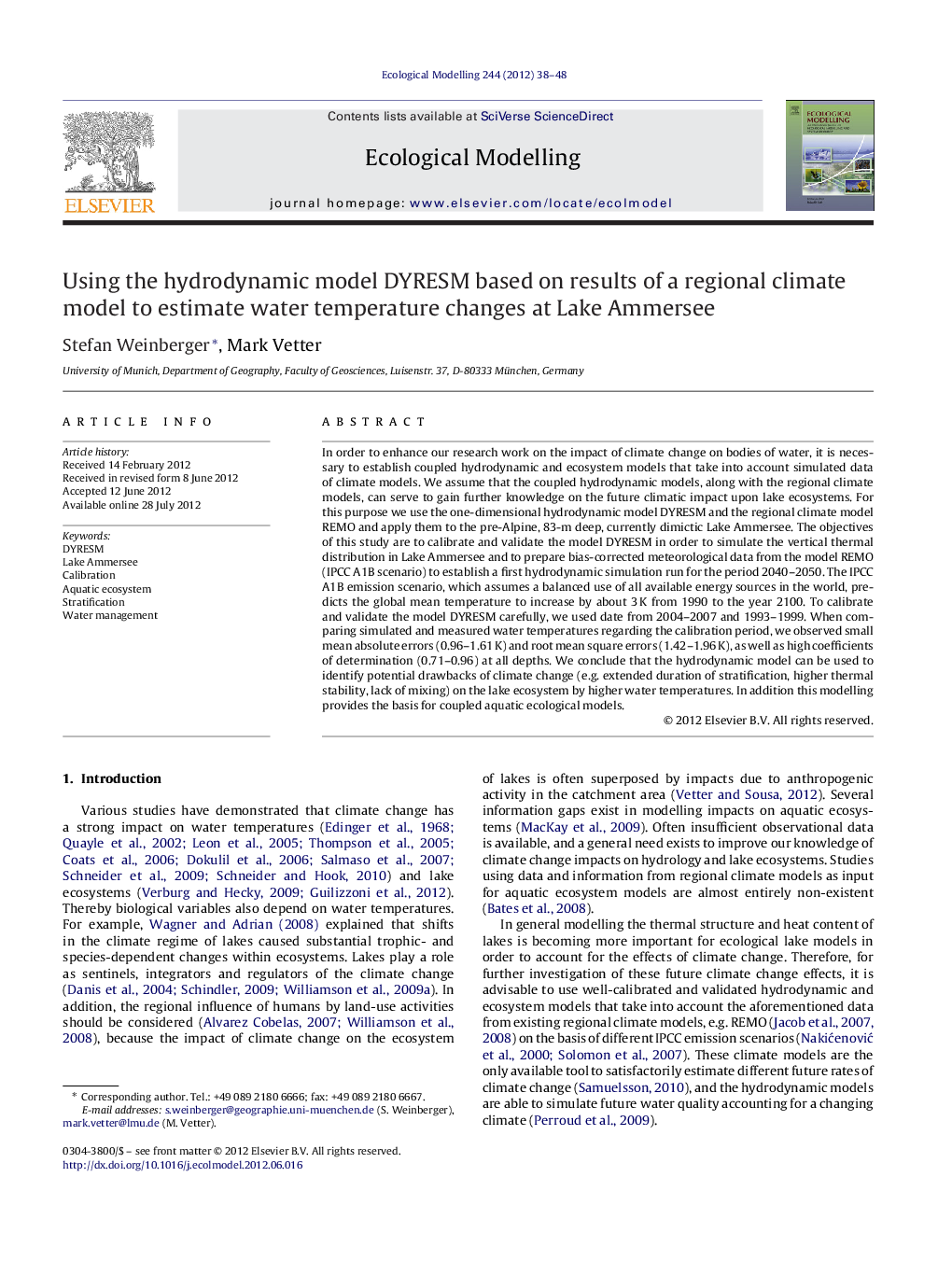| Article ID | Journal | Published Year | Pages | File Type |
|---|---|---|---|---|
| 4376393 | Ecological Modelling | 2012 | 11 Pages |
In order to enhance our research work on the impact of climate change on bodies of water, it is necessary to establish coupled hydrodynamic and ecosystem models that take into account simulated data of climate models. We assume that the coupled hydrodynamic models, along with the regional climate models, can serve to gain further knowledge on the future climatic impact upon lake ecosystems. For this purpose we use the one-dimensional hydrodynamic model DYRESM and the regional climate model REMO and apply them to the pre-Alpine, 83-m deep, currently dimictic Lake Ammersee. The objectives of this study are to calibrate and validate the model DYRESM in order to simulate the vertical thermal distribution in Lake Ammersee and to prepare bias-corrected meteorological data from the model REMO (IPCC A1B scenario) to establish a first hydrodynamic simulation run for the period 2040–2050. The IPCC A1B emission scenario, which assumes a balanced use of all available energy sources in the world, predicts the global mean temperature to increase by about 3 K from 1990 to the year 2100. To calibrate and validate the model DYRESM carefully, we used date from 2004–2007 and 1993–1999. When comparing simulated and measured water temperatures regarding the calibration period, we observed small mean absolute errors (0.96–1.61 K) and root mean square errors (1.42–1.96 K), as well as high coefficients of determination (0.71–0.96) at all depths. We conclude that the hydrodynamic model can be used to identify potential drawbacks of climate change (e.g. extended duration of stratification, higher thermal stability, lack of mixing) on the lake ecosystem by higher water temperatures. In addition this modelling provides the basis for coupled aquatic ecological models.
► We model the thermal characteristics of the pre-Alpine Lake Ammersee. ► We implement a calibration and validation of the hydrodynamic model DYRESM. ► We show the model's ability to simulate the lake's future thermal characteristics. ► Data of the regional climate model REMO is used to estimate climate change impacts. ► DYRESM can be coupled with a lake ecological model.
